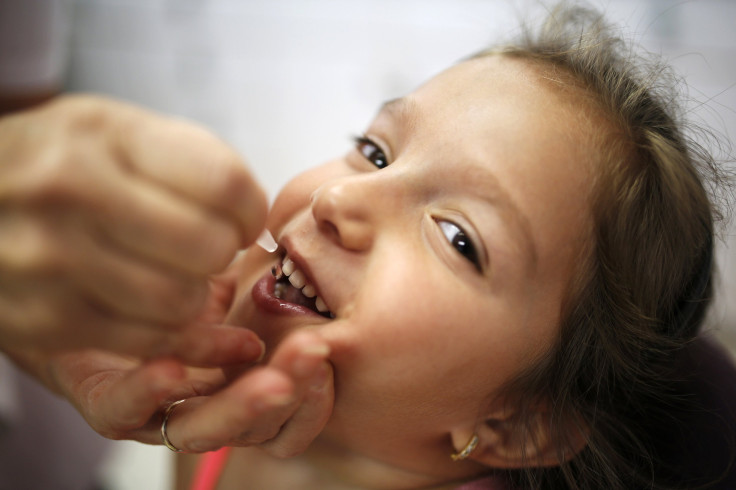Polio Resurgence Threatens 11 Million Children In Philippines, Red Cross Sounds Alarm

Polio, the disease that left thousands of children crippled in the 1950s before a vaccine was developed, has made a comeback in the Philippines. The International Red Cross and its Philippine affiliate have sounded the alarm on the disease that was thought to have been eradicated almost 20 years ago. In the Philippines, a single case requires the government to declare a national outbreak.
Chris Staines, head of the International Federation of Red Cross and Red Crescent Societies (IFRC) in the Philippines, estimates that about 11 million Filipino children under the age of five face a "high risk of disability and even death" because of the virus.
As efforts ramp up to contain the virus, Staines said, "We appeal to all parents to protect their children against the virus during this massive, synchronized nationwide campaign. The Philippines has eradicated polio before, and together we can do it again."
The scare began in September when two children, a three-year-old girl and a five-year-old boy, tested positive for polio. They were the first confirmed cases of polio (short for poliomyelitis) since 2000. The virus has been detected in Manila and Davao, the hometown of Philippine President Rodrigo Duterte.
Prior to the 1955 release of the Salk vaccine, heartbreaking images of children in leg braces and iron lungs were common. The virus enters the body via contaminated water and sewage and is spread person to person by nasal and oral secretions.
Most of the time the disease causes mild flu-like symptoms but if it gets into the bloodstream it will attack nerve cells leading to paralysis. If it enters the lungs, the victim will die without an artificial respiration system like the iron lung. There is no cure, but the virus is thwarted with vaccines.
The Philippines is an emerging country but is still burdened with a huge population living in poverty. Thus, the vaccination coverage rate is only 66 percent and that needs to be upped to 95 percent, according to World Health Organization’s (WHO's) Philippines representative Rabindra Abeyasinghe. Worse yet is that children under the age of five who are the most susceptible to polio have only a 40 percent vaccination coverage rate.
The Red Cross and IFRC are mobilizing funds and efforts for a mass vaccination effort aimed at about 1.2 million children but some parents could be reluctant to have their children participate. In 2017 botched efforts to control a dengue fever outbreak, and President Duterte’s decision to ban the vaccine named Dengvaxia created some reluctance.
2019 has been a busy year for Philippine health management organizations as the polio outbreak follows a measles outbreak in February that killed 477 people and a dengue fever outbreak that lasted through August that killed at least 1,107 people.
© Copyright IBTimes 2024. All rights reserved.




















